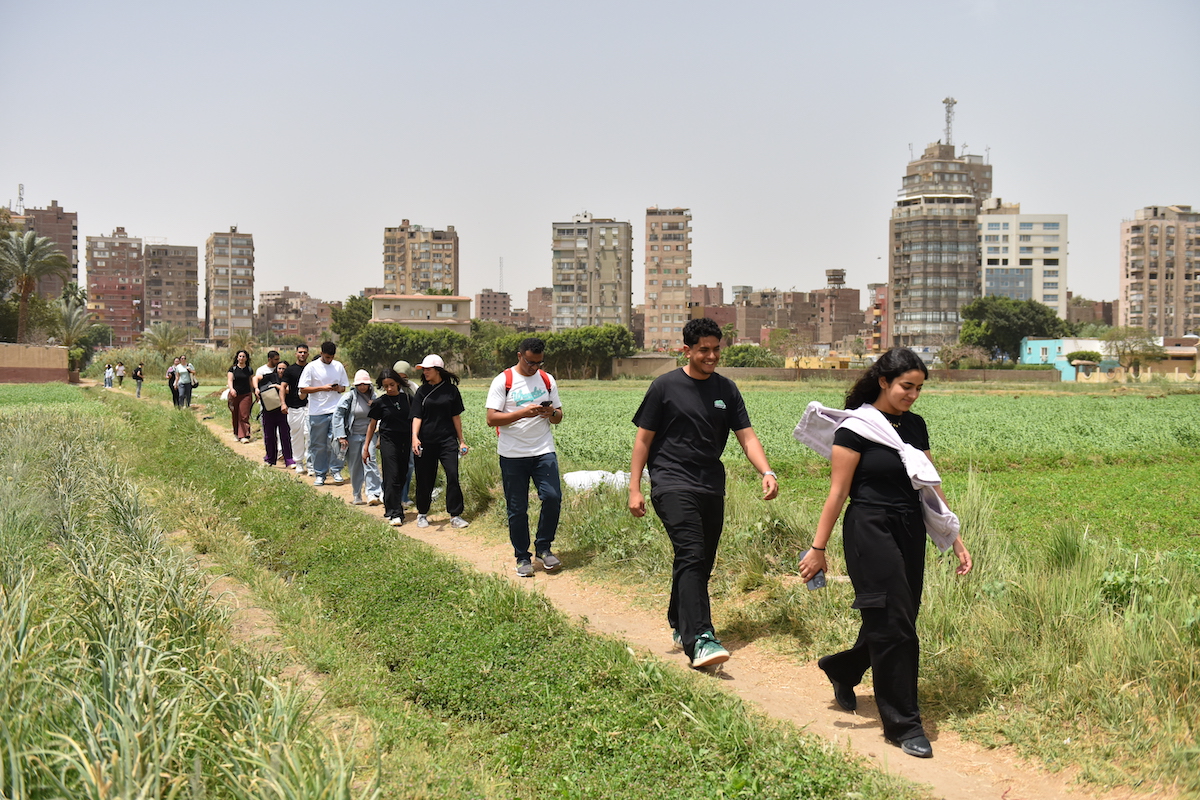By Ian Greer
AUC students got their hands dirty last spring for a history course assignment that took them out of the classroom and into the city, armed with balls made from clay, dirt and seeds called "seed bombs." Scattered throughout public spaces, the bombs are designed to help reseed native plants in a neighborhood. At least 10 seed bombs per student were planted across Cairo in spots where they could survive without assistance, improving the city's greenery. "Eco- guerrilla activism," as Pascale Ghazaleh '97, associate professor in AUC's Sultan al-Qasimi Department of History, puts it.
Available for all AUC undergraduates, The Uses of Heritage: The Past and Its Presence in the Contemporary World is a course that covers different aspects of Egyptian heritage. "Everything from culinary to environmental to built heritage -- things that have to do with intangible cultural heritage, like music or dance," describes Ghazaleh. "It's been a really fun course to teach."
The seed bombing effort is important for protecting Egypt's natural environmental heritage "because increasingly, we've gone toward this idea of lawns and European-style landscaping, which is something that is incredibly harmful to our environment since these plants consume so much water and benefit very few people," says Ghazaleh.
Ghazaleh's students saw this point brought to life in a field trip to Qursaya, a verdant green island on the Nile just south of downtown Cairo. There, enthusiasts for Egypt's environmental heritage maintain gardens of the country's iconic plants, from lotus to papyrus, and work to reintroduce them more widely.



Native Egyptian flora is perfectly adapted for the country's arid climate and can beautify a space without the need for heavy water consumption. While not extinct, much of the country's unique plant life has been marginalized in favor of more "prestigious" foreign species. "Colonizers used to bring their flowers from outside and plant them in Egypt," explains history major Maria Awad. "So our country's plants were colonized too."
Out and About
In all of her classes, Ghazaleh makes a point of taking her students on at least one field trip to downtown Cairo and another to Islamic or Ottoman Cairo as a way of getting them to see another side of the city.
"I find that students are much more oriented toward experientialor visual learning," Ghazaleh explains. "Things strike them in a way on the trips that really wouldn't otherwise. For example, we might go to an Ottoman house in Cairo. Seeing the way the rooms are laid out and how people lived is an experience totally different from anything you can read about."
Maybe if they see those human connections, it will encourage them to invest more of themselves, emotionally and intellectually, in this place.
Last spring, the students visited local NGOs focused on urban development and environmental preservation around the city. Throughout the semester, guest speakers provided insights into how supporting local artisans or restaurants that make traditional local cuisine strengthens a community's identity and resilience. For the final student projects, Ghazaleh had each of them meet with a cultural heritage practitioner to understand their work and assess the problems they face.
Joshua Cromie, a history junior, chose the Nadim Foundation, a nonprofit organization specializing in heritage through restoration projects and an archive containing old photographs, personal narratives and more. He appreciates the connections he made throughout the course. "One thing unique about Dr. Ghazaleh is that she introduces us to different people around the city, so we learn not only from her but also from others," he reflects.
Awad agrees: "She turns the class into something we are all excited about. We want to go on these field trips because they allow us to see what we are reading about in real life."
The New Cairo Bubble
Although fun in their own right, Ghazaleh's field trips and assignments serve a dual purpose of getting students to experience life in Cairo, especially now that AUC's core campus is no longer at the heart of the city in Tahrir. "I have found that a lot of students, especially those who live in compounds, don't actually know the city very much at all," she laments. "They tend to think of the rest of Cairo as somehow dangerous."
Awad remarks that now, when she walks around downtown, she can recognize the historical eras of different buildings and appreciates more the people taking care of Egyptian heritage. "The course brought me closer to places within Cairo that I never visited before," she said. "Now that I know more of their history and the work people are doing to take care of such places, I feel more connected to them."
Ghazaleh has been happy to see students take to the course with such enthusiasm: "I am proud when I feel that students recognize their privilege and understand the responsibility that goes with that. Maybe if they see those human connections, it will encourage them to invest more of themselves, emotionally and intellectually, in this place."
Photos by Omar Mohsen and Rawan Ezzat '12, '15


